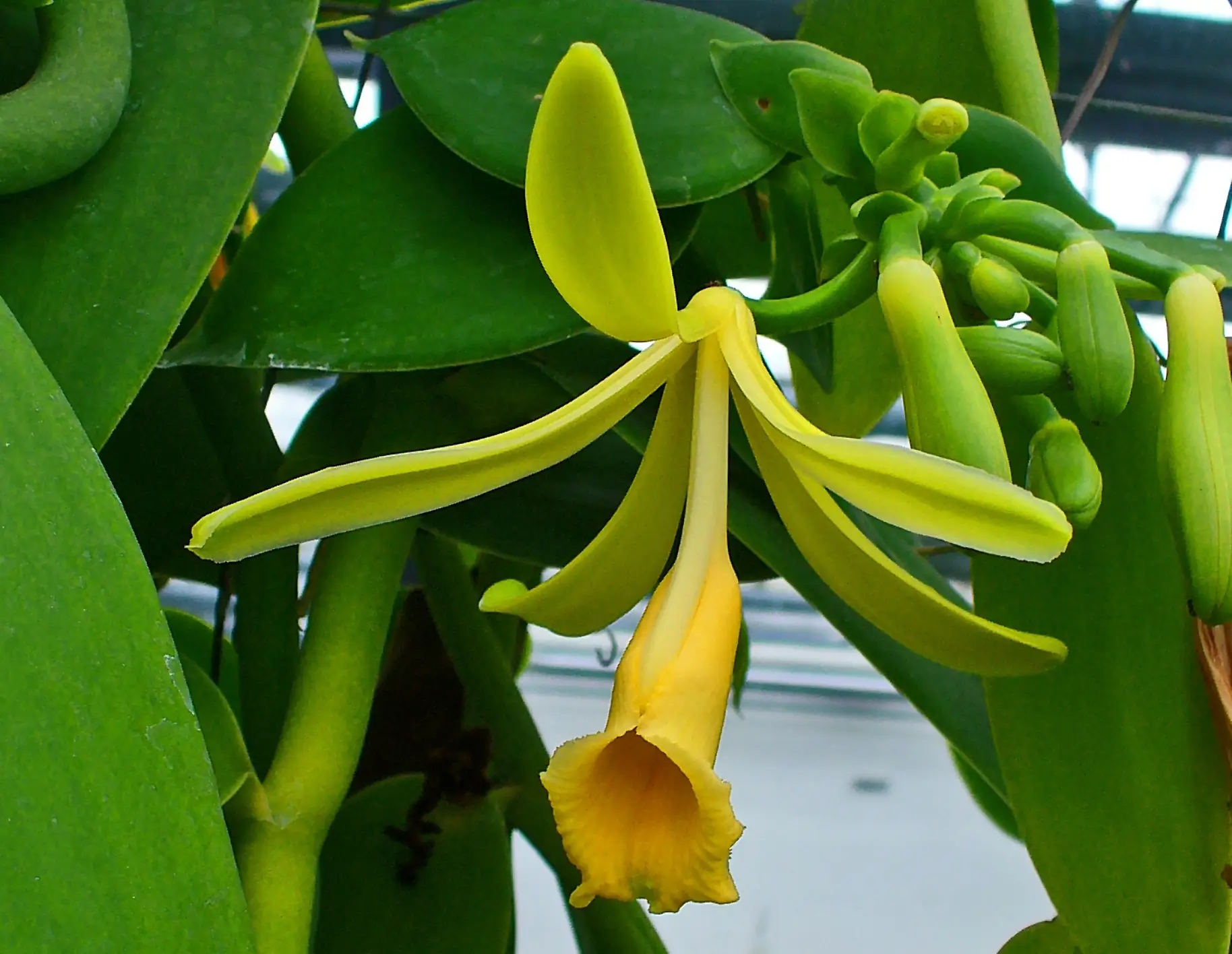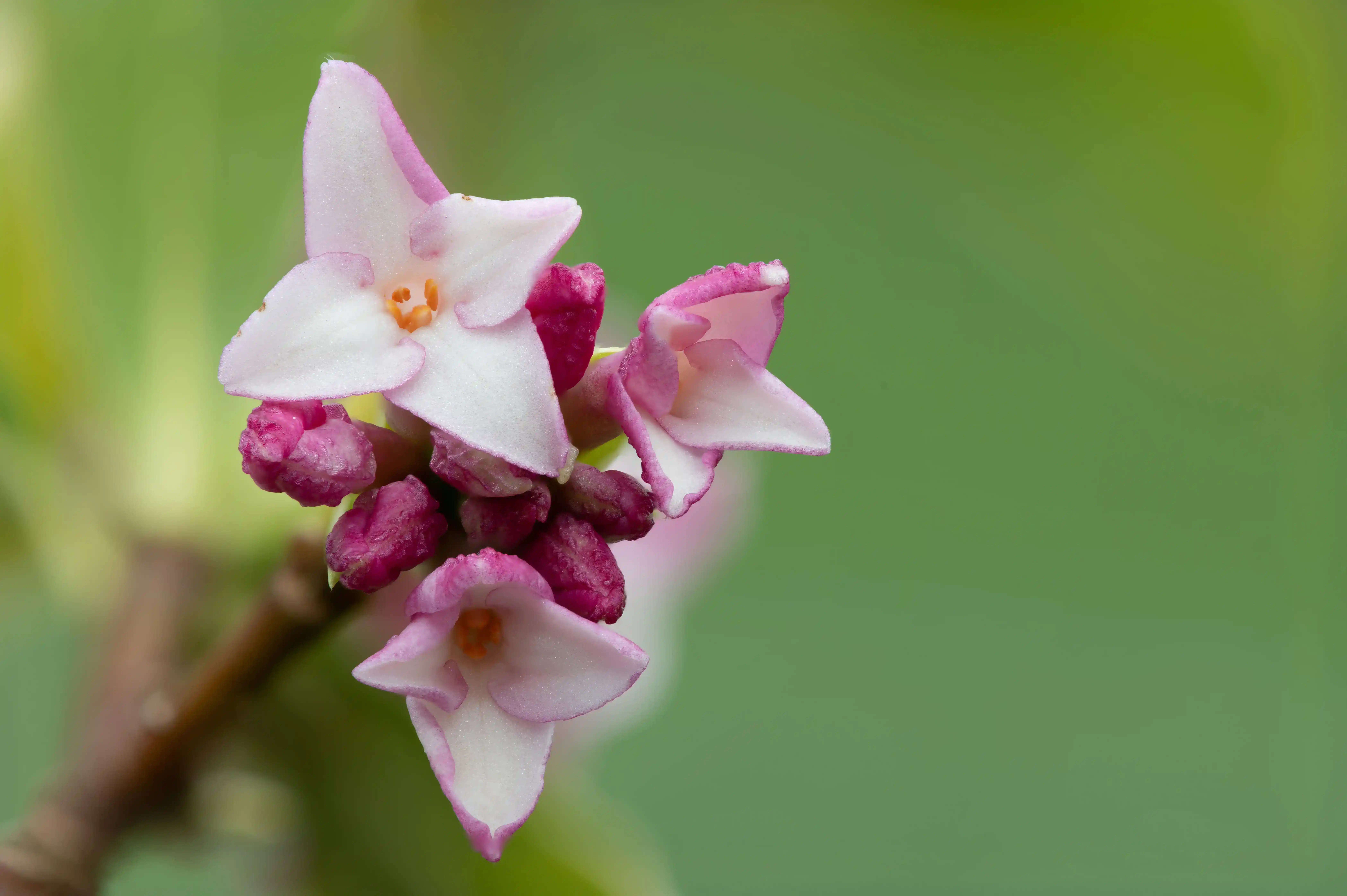
Soil Health & Fertilization
We unite suppliers and green industry professionals worldwide
Vanilla, the world’s most popular flavor, actually comes from a plant. Namely the Vanilla planifolia, a tropical vining orchid that produces long green pods rich with flavor and history.
By Victor Miller
|Published on June 12, 2025


"What if your favorite flavor could grow right in your garden?"
Vanilla, the world’s most popular flavor, actually comes from a plant. Namely the Vanilla planifolia, a tropical vining orchid that produces long green pods rich with flavor and history. Native to Mexico and Central America, the ancient Totonacs and Aztecs of used this orchid long before it captivated the rest of the world. Growing it at home isn’t just a culinary adventure—it’s also a lesson in patience and beauty.
Vanilla orchids can stretch gracefully along trellises or hang from baskets, producing fragrant, waxy blooms that, when hand-pollinated, turn into the famous pods. Although they specifically require long growing season and proper care before they produce a harvest, they are an exotic and dramatic appearance to any home or greenhouse.
| Botanical Name | Vanilla planifolia |
| Common Name | Vanilla Orchid |
| Type | Tropical perennial vine |
| Height | Up to 30 feet (with support) |
| Sunlight requirements | Bright but indirect sunlight |
| Soil needs | Loose, moist, well-draining |
| Water Needs | Moderate |
| Hardiness Zones | 10–11 (USDA) |
| Time to Harvest | 3–4 years (for pods) |

September 25, 2025
9 minute read
September 24, 2025
9 minute read
September 23, 2025
10 minute read
September 22, 2025
9 minute read


Join as a seller and connect with thousands of B2B buyers nationwide!
Sign Up

Daphne
With glossy green leaves and clusters of small, richly perfumed flowers, daphne gives charm and sophistication to the winter garden when little else is blooming. This shrub can be fussy but can offer years of exquisite beauty and scent to those who pamper

Rattlesnake Plant
The Rattlesnake Plant is a tropical show-stopper that brings the rich, colorful patterns of the jungle into your home. Whether paired with other tropicals or simply left to shine alone, this charismatic foliage plant adds a touch of wild elegance to any i

Ursinia
Ursinia is a delightful genus of daisy-like flowers that are native to southern Africa. It offers a simple way of bringing brilliant seasonal color to native and cottage-style gardens.

Ximenia
Ximenia is a shrubby, spiny survivor with delicate blooms and tart, aromatic fruit. Also called “wild plum” or “sea lemon,” this deciduous shrub is valued for its edible fruit, ecological value and unexpectedly drought hardiness.
Vanilla orchids prefer to grow in an environment that is warm, wet, and stable, like their natural, tropical native habitat. They are epiphytic vines, which is to say that they grow on trees in the wild, not in soil, so caring for them is slightly different from most houseplants.
Provide a support structure like a moss pole, trellis, or hanging basket to allow the vine to climb and develop aerial roots. These roots absorb moisture from the air and should never be trimmed off unless they're dried out or dead.
Humidity is essential — aim for between 60 and 80%, particularly indoors. To keep the humidity just right, use a humidifier or mist the plant frequently. Place the plant in bright, indirect light, like near an east or south-facing window with sheer curtains. Direct sun can scorch the leaves, while too little light may prevent flowering.
The temperature should be consistently warm — 70-90°F (21-32°C) during the day, and no cooler than 60°F (15°C) overnight. These plants are sensitive to cold and should never be exposed to frost.
Maintenance includes wiping dusting off the leaves, looking for pests and making sure the roots get airflow. Take care of your vanilla orchid in the right way and it will flourish and, eventually, reward you with lovely blooms — and maybe even pods!
Vanilla orchids like bright, indirect light — think dappled light under a canopy of trees in a tropical forest. If you give them too much direct sun, they’ll get burned leaves, not enough, and they won’t flower. East- or south-facing windows with sheer curtains are perfect. Outdoors, give them filtered shade under taller plants or structures.
Plant in a loose, well-draining orchid mix — bark, sphagnum moss, perlite and a bit of compost for nutrients is ideal. The roots need airflow, so avoid compact or water-retaining soil. If you grow in pots, ensure the container has good drainage to avoid rotting the roots.
The roots of Vanilla orchids prefer to be kept slightly moist but not wet. Water when the top inch of the medium feels dry, generally once or twice a week depending on your climate. Water less often in more humid environments.
Mist it often — especially in dry indoor climates to keep humidity up and support aerial root health. Reduce watering slightly during winter or dormancy.
Pruning Vanilla helps control growth and promotes flowering. Here's how to do it:
Bonus: Light, regular pruning can guide your vine along supports and improve air circulation.
Vanilla orchids are usually grown by stem cuttings. Here's how:
Vanilla orchids do well in containers with the right setup:
Vanilla plants are not frost resistant. If the temperature drops below 55°F (13°C) take them inside or place them in a greenhouse. Give them bright, filtered light and plenty of humidity. Slightly reduce watering and mist more frequently to offset dry indoor air. Don’t let the roots dry out completely.
The Vanilla orchid normally flowers when the vine is mature, about 2–3 years. The blooms are short-lived (lasting just one day),and hand-pollination is required to produce pods unless you're in its native range. The flowers are waxy, pale green to yellow and fragrant. With proper care and light, blooms may appear annually.
Vanilla orchids are relatively easy to care for once established, but they can still encounter some issues — especially when growing in conditions that aren’t similar to their tropical environments. Most problems can be stopped before they start if the temperature, humidity and airflow are considered.
Growing Vanilla can be a bit challenging, but the results — luxuriant green tendrils, elegant flowers, and the possibility of producing your very own vanilla — will make you glad you’d thought to try.
With a little warmth, some indirect light, and some patience, this orchid will flourish as both tropical house plant and botanical showpiece. Whether you’re chasing flavor or simply intrigued by its form, Vanilla planifolia offers beauty and function in one extraordinary vine.
Yes, but it needs high humidity, warmth and bright filtered light — ideally in a greenhouse or a sunroom.
Generally 3-4 years after it is planted, once the orchid matures and is successfully pollinated.
It takes some practice - use a toothpick to transfer pollen from the anther to the stigma early in the day when the flower opens.
Yes — the pods it produces are the actual source of real vanilla flavor once cured.

Soil Health & Fertilization
Victor Miller

Pest Identification & Prevention
Victor Miller

Lawn Care Tips & Maintenance
Victor Miller

Soil Health & Fertilization
Victor Miller

Smart Irrigation Systems
Victor Miller

Patios, Walkways & Driveways
Victor Miller

Soil Health & Fertilization
Victor Miller

Pest Identification & Prevention
Victor Miller
My Account
Our team is always here to help.
We are open Monday - Friday, 9:00 AM to 4:30 PM PST.